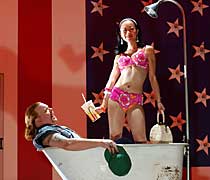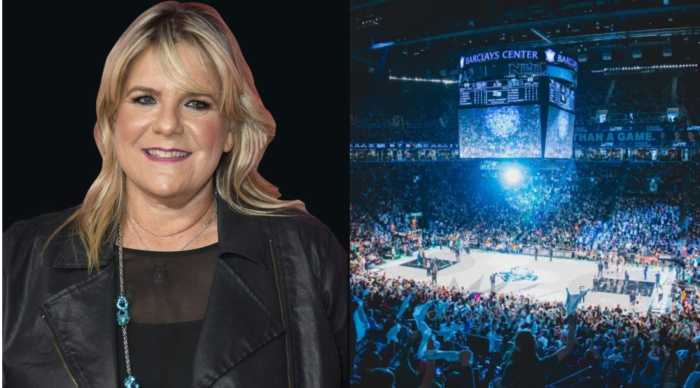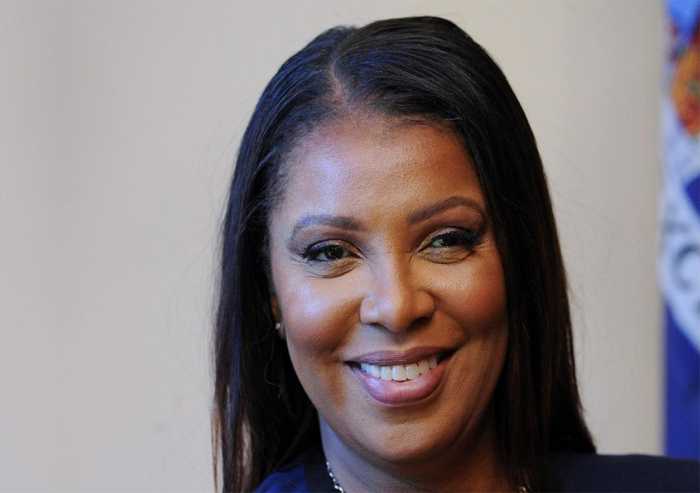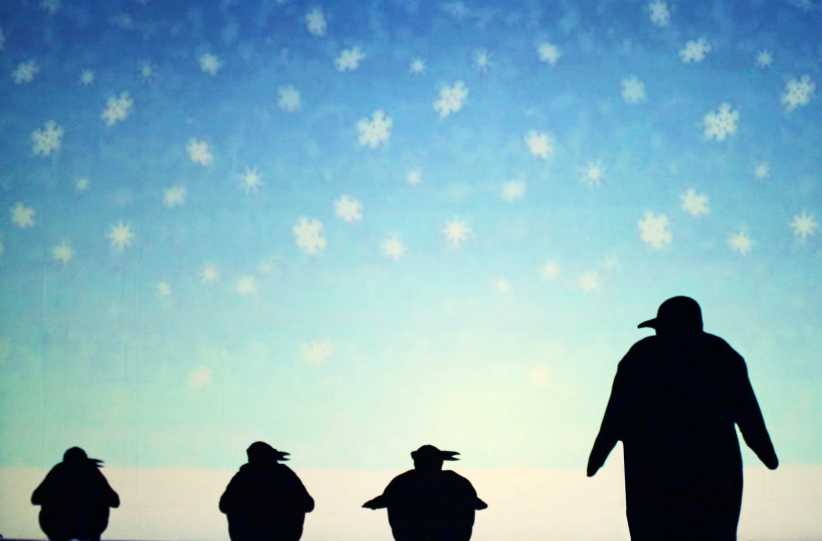Robert Rauschenberg is one of modern art’s
most controversial artists, and he’ll have tongues wagging again
beginning Oct. 14, when "bobrauschenbergamerica," a
play about him written by Charles L. Mee, opens at BAM’s Harvey
Theater.
Early in his career, at the beginning of the 1950s, Rauschenberg
created a series of all-white paintings whose only image was
the shadow made by the viewer. This was followed by a series
of all-black paintings on which torn and crushed newspapers were
pasted down and coated with black enamel; a series of constructions
made from city refuse such as rusty nails, rags and pieces of
paper; and the red paintings, in which he used found objects
– pieces of painted fabric, newspaper photographs and postcards.
Director Anne Bogart, whose SITI Company produced "bobrauschenbergamerica,"
says she was not familiar with Rauschenberg’s work until playwright
Mee (with whom she had already worked on his "Orestes")
approached her with his project.
"Chuck wanted to teach me what art can be by doing the play,"
she told GO Brooklyn. "Bob Rauschenberg’s vision of the
world can be contagious. I certainly caught that delight."
Once Bogart decided to direct Mee’s play, the challenge was "how
to translate a vision into an art that moves through time."
"We tried to capture the spirit of Rauschenberg," says
Bogart. "There is an intense sensibility of freedom in his
work. In looking around the landscape, he found delight in discarded
objects. I tried to translate his wonder of the world into a
play. I’m not trying to take his art and put it on the stage.
More important than the art is the feeling."
Bogart, 52, who comes from Navy people on both her mother and
father’s side and claims to be the great-great-great-great granddaughter
of a captain in the Revolutionary War Minutemen, says the play
is "really like vaudeville" and in that way is "quintessentially
American."
"There is a Midwestern ’50s feel to what is American,"
she says. "It’s picnics, cars, dances. On both coasts we
get confused. I’m totally sympathetic to that past, and I don’t
want to forget it. But there is a darker side to it, and a darker
side to the play. There is also a seduction."
"Bobrauschenbergamerica" has no traditional narrative
structure; it is a series of vignettes that take the audience
from Rauschenberg’s childhood home to a New York cafe through
a patchwork of people and places, music and dancing, schemes
and shootings – a veritable panorama of America – played out
against what Bogart calls an "extreme graphic setting"
with the actors dressed in very ’50s clothing that "starts
to look brilliant in a Rauschenberg sense." (Both costumes
and setting were created by James Schuette.)
But although "bobrauschenbergamerica" is composed of
"numbers" and "the transitions are not fluid,"
Bogart believes the play does have linearity "in that there’s
a love story – boy meets girl, boy gets girl, boy loses girl,
boy gets girl."
Bogart, who runs the graduate directing program at Columbia University,
says, "I think Chuck is the forerunner of breakthrough playwriting
in our time." Like the advocates of hip-hop and sampling,
Mee embraces other people’s texts. "His work is brand new
and steeped in the way Americans create art" says Bogart.
(Mee’s OBIE Award-winning "Big Love" was presented
as part of the 2001 Next Wave Festival.)
Bogart’s perspective on what it means to be American has been
shaped by her unconventional upbringing. Because she grew up
in the Navy, Bogart says "we moved every year. The longest
we ever lived in one place was when we lived in Japan."
And that was not much more than two years. Coming from this background,
her work is both very American and multicultural.
In 1992, she founded SITI Company with Japanese director Tadashi
Suzuki. SITI Company’s "War of the Worlds" was presented
at BAM’s 2000 Next Wave Festival.
"A lot of my work is about what it means to be an American.
At the same time, I have an interest in international art and
not getting too blinded by my own country," Bogart says.
In many ways, Rauschenberg, who was both an egalitarian and an
iconoclast, embodies what many consider the best in the American
character. In this way Bogart and Rauschenberg may indeed be
kindred spirits.
SITI Company’s production of "bobrauschenbergamerica"
will take place in the BAM Harvey Theater (651 Fulton St. at
Flatbush Avenue in Fort Greene) Oct. 14-18 at 7:30 pm. Tickets
are $20, $35, and $50, and they can be purchased by calling BAM
Ticket Services at (718) 636-4100, or by visiting the Web site
at www.bam.org.

























